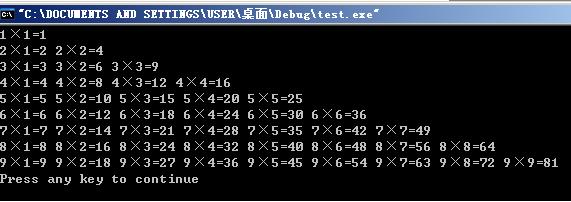poj 2253&zoj 1942
Frogger
Time Limit: 1000MS Memory Limit: 65536K
Total Submissions: 20716 Accepted: 6741
Description
Freddy Frog is sitting on a stone in the middle of a lake. Suddenly he notices Fiona Frog who is sitting on another stone. He plans to visit her, but since the water is dirty and full of tourists' sunscreen, he wants to avoid swimming and instead reach her by jumping.
Unfortunately Fiona's stone is out of his jump range. Therefore Freddy considers to use other stones as intermediate stops and reach her by a sequence of several small jumps.
To execute a given sequence of jumps, a frog's jump range obviously must be at least as long as the longest jump occuring in the sequence.
The frog distance (humans also call it minimax distance) between two stones therefore is defined as the minimum necessary jump range over all possible paths between the two stones.
You are given the coordinates of Freddy's stone, Fiona's stone and all other stones in the lake. Your job is to compute the frog distance between Freddy's and Fiona's stone.
Input
The input will contain one or more test cases. The first line of each test case will contain the number of stones n (2<=n<=200). The next n lines each contain two integers xi,yi (0 <= xi,yi <= 1000) representing the coordinates of stone #i. Stone #1 is Freddy's stone, stone #2 is Fiona's stone, the other n-2 stones are unoccupied. There's a blank line following each test case. Input is terminated by a value of zero (0) for n.
Output
For each test case, print a line saying "Scenario #x" and a line saying "Frog Distance = y" where x is replaced by the test case number (they are numbered from 1) and y is replaced by the appropriate real number, printed to three decimals. Put a blank line after each test case, even after the last one.
Sample Input
2
0 0
3 4
3
17 4
19 4
18 5
0
Sample Output
Scenario #1
Frog Distance = 5.000
Scenario #2
Frog Distance = 1.414这是一道变式的floyd,其实只要找到递推公式,就非常的简单。这个题目笔者很快就找到了递推的公式,但坑爹的是笔者在存储上搞错了,我用了两个数组来存储x,y的坐标,但其实用个结构体就搞定了,结果就为这个小错误,wa了半天,还是不太灵活啊!下面是代码:
#include <cstdio>
#include <cstring>
#include <iostream>
#include <algorithm>
#include <cmath>
using namespace std;
const int maxn=300;
struct node{
double x;
double y;
};
node edge[maxn];
double w[maxn][maxn];
int n;
double juli(node a,node b){
return sqrt((a.x-b.x)*(a.x-b.x)+(a.y-b.y)*(a.y-b.y));//求距离的公式
}
void floyd(){
for(int k=0;k<n;k++)
for(int i=0;i<n;i++)
for(int j=0;j<n;j++){
w[i][j]=min(w[i][j],max(w[i][k],w[k][j]));//关键的递推公式
}
}
int main(){
int caseno=0;
while(scanf("%d",&n)!=EOF){
if(n==0) break;
for(int i=0;i<n;i++){
scanf("%lf%lf",&edge[i].x,&edge[i].y);
}
for(int i=0;i<n;i++)
for(int j=0;j<n;j++){
w[i][j]=juli(edge[i],edge[j]);
}
floyd();
printf("Scenario #%d\n",++caseno);
printf("Frog Distance = %.3f",w[0][1]);
printf("\n\n");
}
return 0;
}
补充:软件开发 , C++ ,




